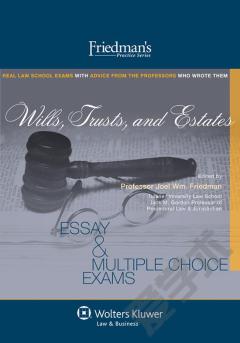Contemporary Trusts and Estates
In this essay in a special issue dedicated to teaching trusts and estates, the co-authors of Contemporary Trusts & Estates: An Experiential Approach (2d. ed. Aspen 2014) reflect on how the teaching of trusts and estates can integrate policy, practice, doctrine, and centuries of tradition. They describe the genesis of their problem-based casebook and the influence of the Carnegie Report on their choice of pedagogic framework. Each of the co-authors embraced the fundamental principles advocated by the Carnegie Report, which counsels that legal education should integrate "theoretical and practical legal knowledge and professional identity." This essay goes on to outline how the book incorporates a problem-based methodology as well as an innovative choice of ordering the chapters that tracks the chronological path of estate planning, addressing the lifetime use of trusts first, followed by issues of will validity and interpretation. Drafting exercises complement the problems as well as traditional cases that illuminate theory and practice. With chapters on planning for disability, the federal estate and gift tax, estate administration and charitable trusts as well as basic doctrine on intestacy, wills and trusts, the book reflects the contemporary challenges addressed by trusts and estates lawyers. The co-authors have found that the bookâs innovative approach engages students in a way that makes the study of trusts and estates relevant and students practice-aware.This article is part of the Journal's annual Teaching Issue, "created as a forum for scholars, judges, practitioners and students to discuss methods for the effective teaching and learning of particular law school courses. With the constant evolution of legal topics and instructional resource options, this issue provides a resource for professors, deans, and anyone interested in the continued development and improvement of legal education."
{{comment.content}}








 京公网安备 11010802027623号
京公网安备 11010802027623号